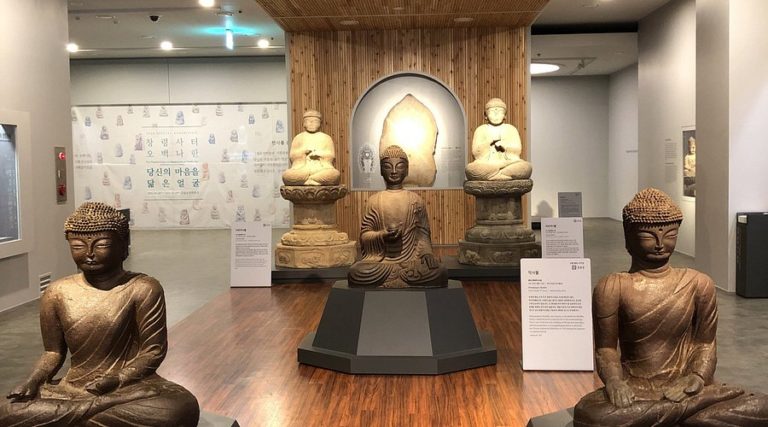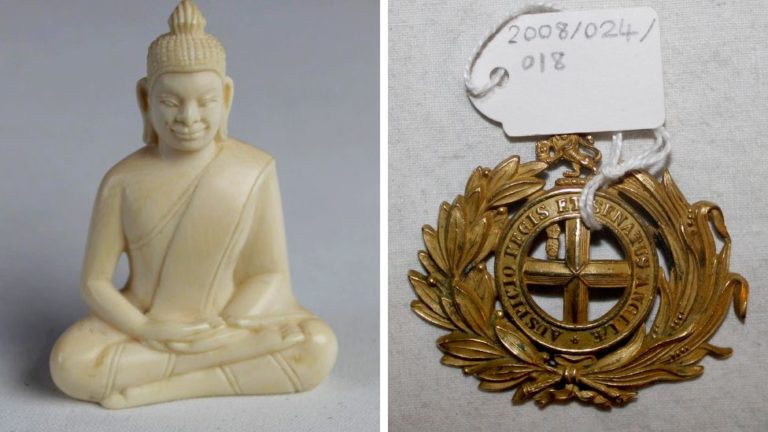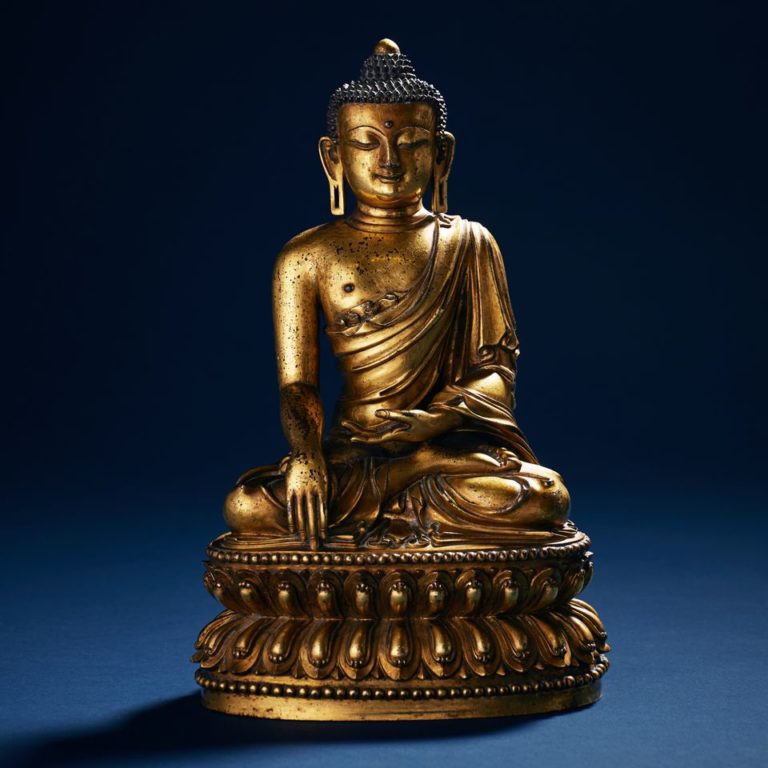
It might be one of the most exciting archeological finds of 20th century China. More than 400 delicate Buddha statues, carved between the 5th and 6th centuries, had slept underground for almost 2,000 years until they were unearthed by accident in the small, quiet city of Qingzhou, Shandong Province, in 1996.
A bulldozer driver felt the school playground construction site surface he was working on was too hard to advance. He stepped out of his cab to take a closer look and was stunned to discover a Buddha’s head when he raked away the earth to see what was stopping his dig.
The excavation went on for seven days and nights until all the Buddhas were revealed in a cellar, 8.6 meters long by 6.7 meters wide.
“I remember there was a Buddha, lying intact in the dust, so gorgeous and sacred,” said Xia Mingcai, former deputy director of Qingzhou Museum, who joined the excavation team in 1996. “People often say Venus is beautiful, but I think the lying Buddha is way more beautiful.”
Located in the Shandong Peninsula, Qingzhou has a history of more than 7,000 years and was one of the nine “magic lands” (zhou) in ancient China.
Before the cellar was discovered, elderly locals knew that there was an ancient temple, called Longxing Temple, according to the county annals. It had a large monastery around AD 500 and had been prosperous for more than 800 years. But then the temple disappeared around AD 1300 without any record.
More than 400 Buddhas were eventually unearthed raising questions why so many statues were buried so densely in a cellar no more than 50 square meters by three meters deep? Furthermore, some Buddhas had been deliberately smashed. Who did this and why were they buried so carefully afterwards?
Archeologists authenticated the Buddhas by the artisans’ carving skills and coloring methods and found that most of them were finished in the 5th and 6th centuries when China was suffering from a national turmoil.
The northern nomads invaded the southern Han group’s territory, turning the country into a separatist regime between north and south. The turbulent society, however, gave a great boost to the development of multiple cultures and religions at the time. Several of the Qingzhou Buddhas can be traced back to the beginning of the 5th century.
They mostly had a background screen, one of the Buddha statue designs was introduced from the Central Asia. It was often made up of three Buddhas, with the middle one as the main character, Sakyamuni, who was smiling, a very Chinese-adapted interpretation of Buddhism originating from India.
The three Buddhas were standing on a big lotus leaf to echo the anecdote that Sakyamuni was enlightened under a banyan tree by two lotus flowers. Interestingly, the pattern of a dragon, a Chinese totem, was inscribed on the statue, which had never been seen on other Chinese Buddha statues.
In an era of betrayal, conspiracies and slaughters, religion was used as self-redemption for people. After the 4th century, Buddhism prevailed in China after it was married with politics. Emperors and royal families became pious followers, and they ordered countless Buddha statues, big and small, to be erected all across the country. And the Buddha model was said to be the emperor himself.
It was a time where people needed faith and an icon and Buddhism worked for them as a symbol of hope.
At the time, Qingzhou was a link between the north and south as a center of religion and politics. A large number of Buddha grottoes were carved and worshiped. Today in Qingzhou, there are still several cave temples with Buddha statues that were established between the 6th and 7th centuries, a golden age for the religion.
Numerous temples were sprouting up. Longxing Temple, the biggest in Qingzhou, boasted tall pagodas and grand halls. The county annals noted that a giant Buddha, around 13 meters high, stood in the middle of the main hall and, like all Buddhas, featured highly skillful engraving.
“I think they were carved by Longxing Temple’s full-time monks, who put their faith, respect and worship with a devout heart into every cut,” Xia said.
This is only a plausible assumption because the real workers of these Buddhas remain unknown. Art was born when people’s wisdom was combined with deep religious belief.
After Buddhism was introduced to the nation, China started to make religious icons. Early Buddha carving was influenced by India and Central Asia, before the Chinese developed their own style, which is proved by the discovery of the Buddhas at Qingzhou.
In the early 5th century, Buddhas were mostly slender with low shoulders, a typical body figure of the Chinese Han group, while their cheekbones were prominent, a traditional image of a Chinese wise man. The Buddha also changed and wore a long, loose robe after they traveled from India.
However, the style had a big shift by the 6th century. The embossment with the design of a background screen disappeared. Buddha’s face turned round and plump and they were all in tight-fitting clothes showing an elegant body curve, which brought it back to the Indian style. The change was so sudden without any transition. Meanwhile, this Indian-like style was never found outside Qingzhou.
The carving style became complicated in detail and all of them were colored and painted with golden foil.
The stone selected for the statue carving was local limestone, fine in texture and moderate in hardness, ideal to bring out the best of a Buddha. Today, the statue carving tradition is still one of the biggest industries of Qingzhou.




